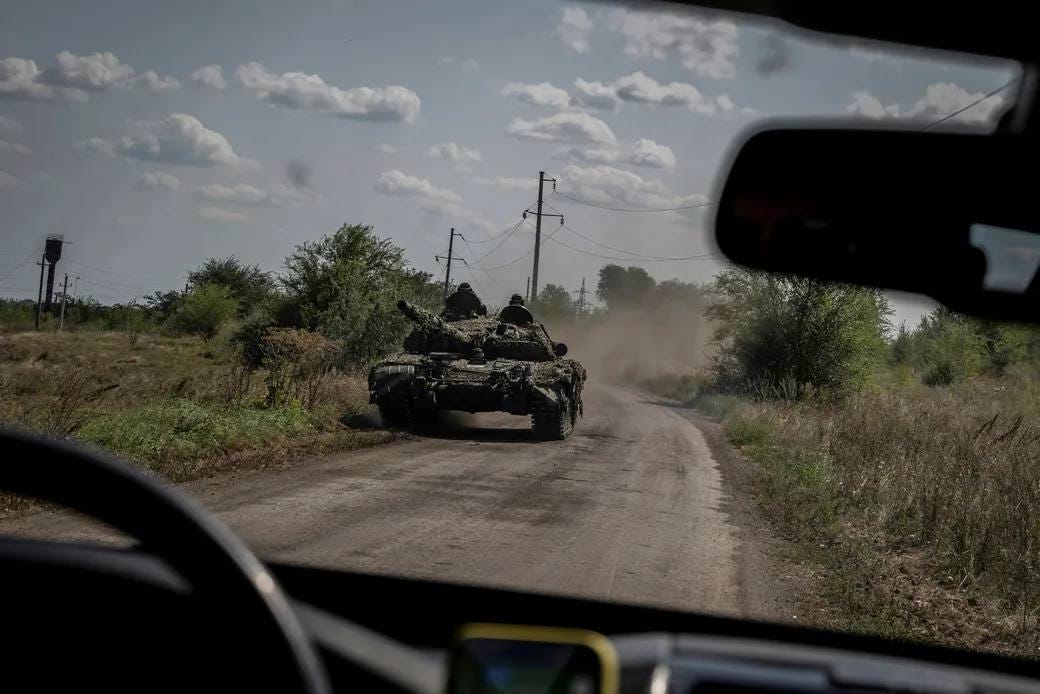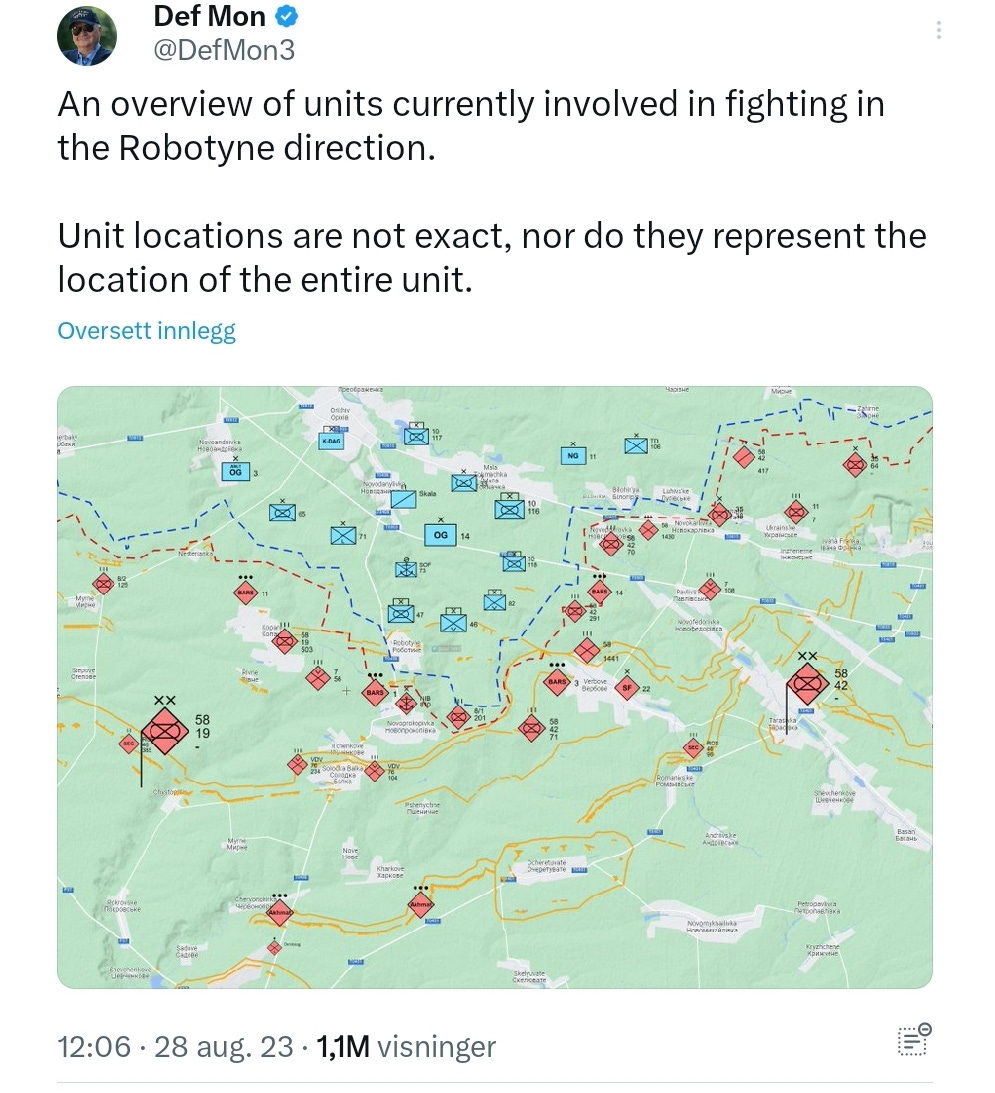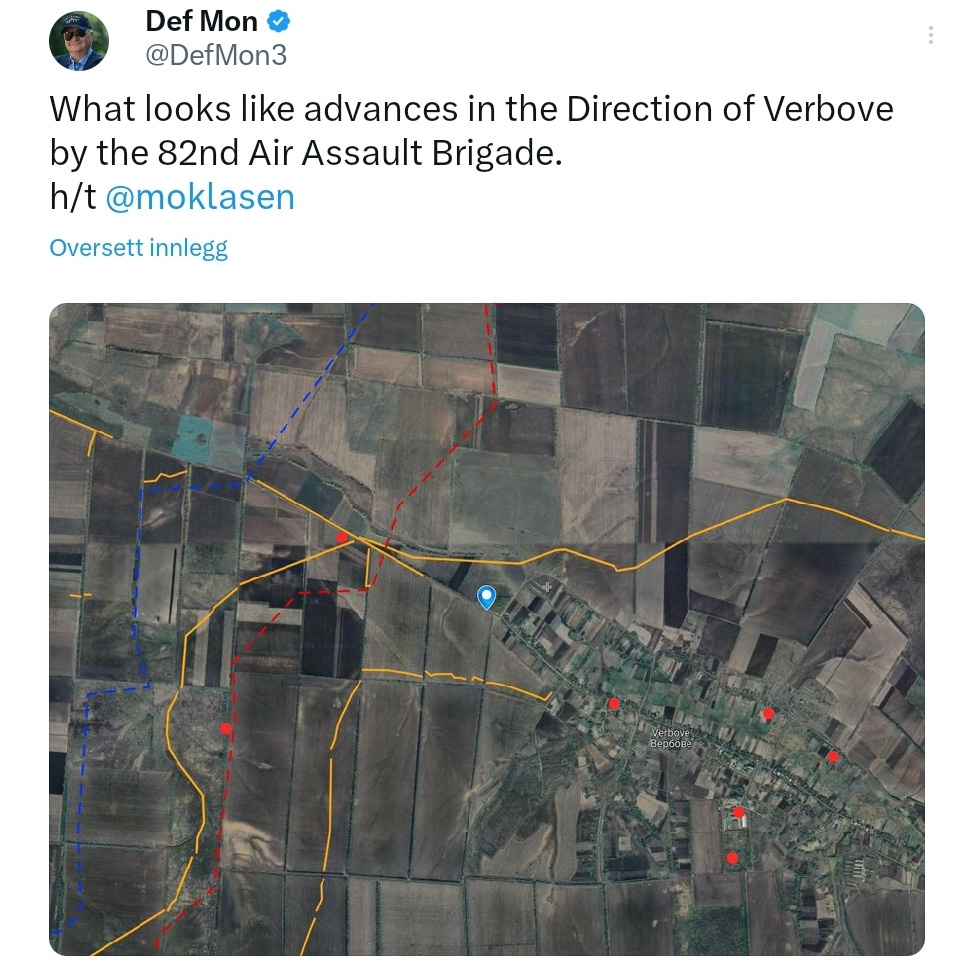Autumn Approaches: Part 2
Prospects for the Ukrainian offensive going into autumn and winter
In this article I will look at the prospects of the Ukrainian offensive. Since writing doesn't goes as quickly as I wanted and the articles becomes lengthy, there will be a Part 3 coming later, where I will discuss other factors and aspects that will influence the course of the war.
If you haven't read Part 1 yet, please do that before reading further, as understanding how I interpret the events of this summer is the context through which I look at the future.
Some may not like what I say about the ongoing offensive. Presenting a glossy picture when reality looks different helps no one. I try to provide unemotional analysis of the war and to do better in the future, lessons must be learned from the past. In democracies, uncomfortable discussions needs to held, even on topics such as this.
There are no signs of Russia backing down. Their war aims seems unchanged, despite lacking the means achieve them. Ukraine, fighting an existential war, is naturally not interested in negotiations that likely would compromise territorial integrity. There's simply no basis for any negotiations at the current time. Despite calls from some circles, there is seems to be no real Western pressure to force Ukraine to negotiate, even if the offensive falls short of the original objectives.
I have for a long time said that the guiding strategic planning assumption, both in the West and in Ukraine, must be a long war. There has been to much focus on the Ukrainian offensive, to little on what comes next. Rob Lee and Michael Kofman had a good article in Foreign Affairs on that in May.
Focusing on short term prospects, rather than placing the offensive in the context of a long war, may have, in combination with too high expectations, contributed to the heated debate around it. In this discussion, less heat and noise and more sober, level-headed analysis is needed.
Prospects for the Ukrainian offensive: Current trajectory
I think it's unlikely we'll see a major breakthrough and then exploitation, resulting in Ukraine recapturing significant territory in the current phase. Thus, the offensive will fall well short of the original objectives for the operation. By saying this, I don't mean that no progress can be made, but slowly grinding forward doesn't equal a breakout.
Why do I find a major breakout unlikely? Ukraine likely lacks the offensive potential required to do this. As I discussed in Part 1, this is due to the combination of internal AFU factors, the Russian defensive effort and deficiencies and delays in Western support, the two former more important than the latter. There is also the attrition caused by two and a half months of heavy fighting, which has required the commitment of most units held in reserve for the offensive.
Available artillery ammunition is also an important factor and there will likely be future shortages, possibly late autumn and winter, until increased Western production comes on line. DPICM extends the time window on artillery ammo, so this decision was very significant, both for current and future Ukrainian operations. Despite this, artillery ammunition availability and consumption remains a real concern.
The biggest unknown in this assessment is how the Russian forces in Zaporizhzhia will cope with prolonged attrition. They too have taken substantial casualties over the summer.
The recent transfer of the 76th Air Assault Division from Kreminna to Zaporizhzhia, the first such from the east and north, can be interpreted as a sign of attrition having taken it's toll on Russian forces in the south too. This also indicates that the Russian General Staff takes the Ukrainian offensive in the Orikhiv direction seriously, after having been able to counter it with the forces in the region over the summer. Still, a major collapse seems unlikely as the Russians can transfer in new reinforcements from elsewhere, though there's a limit here too.
The fighting seems to be on a trajectory now, that if the Ukrainians doesn't make at least some changes, the chance of the offensive culminating within the next month or so is very real. So, what can be done?
Changing the weight of effort
Going by recent articles in various outles, examples here from the WSJ, The Guardian and the NYT, there seems to be considerable US and UK pressure to concentrate forces on the Orikhiv axis. This shift might already be happening.
The continued pressure elsewhere this summer, most notably around Bakhmut has served a purpose, tying down significant VDV elements, most notably large parts of the 98th and 106th Divisions and the 31st and 11th Air Assault Brigades. Therefore I disagree with those saying that the pressure around Bakhmut was wrong, but there are nuances here.
Weight of effort will always be a dilemma at the General Staff level. While maintaining pressure elsewhere serves a purpose, how you do this and with what units is another matter. A question that can be asked, and is raised in the debate, is whether it was wise using experienced units near Bakhmut while new units were assigned to the main effort. I won't go into this discussion now, we are where we are, but some units can likely be moved.
If the AFU transfers some units from other sectors to Zaporizhzhia and the Orikhiv axis now, how can that affect the situation? It can allow Ukraine to maintain forward momentum longer, getting in a better position for future operations.
Would it be enough to create a breakthrough? While confidence of any answer to this is plagued by uncertainties, I think likely not. At least some units would likely have to be re-committed without a proper rest period, after having been in combat for months and this will have an effect on their potential. Delays before commitment risks the offensive culminating in the meantime.
Reduced pressure elsewhere could allow the Russians to do the same, depending on local circumstances and the status of their units. This would give them additional means to deal with attrition in the south, again contributing to keeping probability of a breakthrough low. As for the argument that pressure elsewhere ties down Russian units, this effect might have been reduced when Ukrainian pressure around Bakhmut lifted recently. Maintaining some pressure on the Velyka Novosilka direction or other parts of the southern front, as a supporting axis, still makes sense in order to keep Russian forces off balance, but as always, there are trade-offs to consider.
Changing the weight of effort to focus on developing the Orikhiv axis seems like the best option for Ukraine. In essence, to try and make the best of the situation as it stands now. As long as a breakout, with subsequent collapse of the Russian lines is unlikely, the Ukrainians needs to widen the current bulge. Such efforts seems to be underway.
Securing the flanks is necessary both in order to make holding the current bulge more sustainable in case progress south stops and to secure lines of communication for future advances. Without expanding horizontally, it will be difficult to support future advances southwards with both air defence, artillery and logistics and units in the bulge risks being caught in a Russian fire sack, resulting in increased attrition over time.
Other considerations going into autumn and winter
While the outlook above may look grim and will be disliked by many, rewriting the objectives to suit the situation on the ground, as some now do, is an obstacle for the changes needed to succeed in the future.
Many also vastly overestimates the impact of long-range fires, saying that if Ukraine gets “x kilometers further south”, Russian supply-lines will become unsustainable. There are many examples in this war, most notably the orderly Russian withdrawal across the Dnipro last year, showing the limited impact of long-range fires. Any new capabilities realistically delivered by the West, while increasing friction, is unlikely to drastically change this. To liberate territory, Ukraine will have to push forward on the ground.
A key issue for Ukraine will be to prevent a long pause that enables the Russians to reset their defensive lines, dig new fortifications and lay new extensive minefields. Even if the current offensive culminates, there will be a need for future operations to maintain the pressure. Building up for another attempt on the scale seen this summer will take time, so we might see a series of smaller operations instead.
I don't think future prospects hinges on large Western equipment donations, as long as donations keeps up with attrition. What is more important is learning from this summer and try to rectify some of the internal issues that has hampered Ukrainian progress. This rests in no small parts on the Ukrainians themselves, but I think Western assistance can make a difference. As said on earlier occasions, to succeeding with this will require humility from both sides.
Russian offensive potential is unlikely to increase in the timeframe covered in this article. While they might try substantial counterattacks, the prospect for major advances are slim for them to. By counterattacking at scale, they also risk sustaining heavy losses. This might not stop them from trying though and local counterattacks are key part of Russian defensive doctrine.
The defining feature of everything discussed above is attrition. Attrition is a key factor influencing future developments, but is difficult to measure and brings with it a lot of uncertainty.
How both sides will cope with prolonged attrition is an open question, but it can also generate surprises. High Ukrainian attrition can result in an early culmination, while high Russian attrition can force them to withdraw to lines currently in the rear, or in the extreme, cause a collapse. I do find the latter unlikely and it's not an assumption one can make plans on, at any level.
Summing up
This phase of the war was always going to be one that paves way for the next. It is also worth repeating that I think any army would have struggled and taken heavy casualties attempting to do what the Ukrainians have been trying to accomplish.
What matters now is for Ukraine to make the best of it, to lay the foundation for new operations later this year and in 2024. I hope the discussion around the offensive can progress, looking more into what comes after it and what is needed to succeed then.
War is inherently unpredictable. Any assessments, such as mine here, deals with probabilities and uncertainties, not given outcomes. However, developments over the summer does, in my view, say a lot about what to expect for this autumn. Failing to meet the original objectives doesn't mean progress can't be made, but that progress will likely come slow and at a cost. A breakout seems unlikely, one must manage expectations.
How both sides will cope with prolonged attrition is also a factor adding uncertainty. Some time in the near future there will be a need to take stock and draw up new plans and timelines.
In my view, there's a need for a series of smaller operations to keep up the pressure before a new major push is attempted. By shifting the weight of effort, Ukrainian capabilities should be sufficient to do this. However, significant internal learning and changes within the AFU will likely be needed if the probability of a large scale breakout is to increase.
There is always a possibility that events may overtake what I write in these seasonal assessments, but this is how I see the prospects of the Ukrainian offensive, as it stands now.
There's much heavy and bitter fighting yet ahead. To liberate significant chuncks of territory, Ukraine needs to overcome both internal factors and the Russian forces defending.
Remember, the enemy always has a vote and the Russias shouldn't be underestimated.
In Part 3, can't promise when it will be published, I will look at other aspects such as the naval war in the Black Sea, strike operations of both sides and the air war, Russian force generation and a discussion on Western support and future Ukrainian requirements.
Regards
The Lookout



Thank you very much. I greatly appreciate these articles - they are very helpful indeed in assisting a non-expert person like me gain a better understanding of the course of the conflict.
Many also vastly overestimates the impact of long-range fires, saying that if Ukraine gets “x kilometers further south”, Russian supply-lines will become unsustainable. -> I agree with this for some russians' countermeasures against long-range strike resources, and their effort to reconstitute the logistics, and simply deploying more resources.
Also, Tatarigami_UA had mentioned about cost-effiency of long range fires, because they cannot shoot HIMARS for a single GAZ truck.